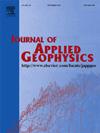Unsupervised learning approach for revealing subsurface tectono-depositional environment: A study from NE India
Abstract
The present study attempts to explore the efficacy of self-organizing maps (SOMs) in understanding the pattern of seismic reflections and analyze their implications for revealing the subsurface tectono-depositional environment prevailing within the Oligocene-Miocene intervals of the Upper Assam foreland basin, NE India. A series of seismic attributes including geometrical, spectral, amplitude, and GLCM-textures are extracted using high-resolution three-dimensional seismic data acquired from the upper shelf of the basin. These attributes are amalgamated into two different cases to compute the SOM models with an aim to highlight the subsurface structures and reveal sedimentary deposits engulfed within these structures. It is observed that the model SOM Case 1 highlights subsurface fault networks that structurally control the Oligocene-Miocene intervals. However, the model SOM Case 2 not only hints at the presence of these structures but also illuminates different patterns of seismic reflections and geomorphic features associated with sediment entrapped within the fault-bounded structures. Through this research, we envisage that for the SOMs to be optimal, geologically meaningful sets of seismic attributes should be used as an input such that attributes assisting seismic interpreters could successfully identify relations or patterns within the data. The method presented in this study can be applied to similar geologic settings to aid subsurface interpretation.

 求助内容:
求助内容: 应助结果提醒方式:
应助结果提醒方式:


